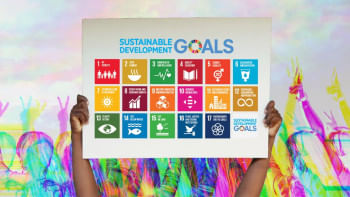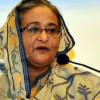How innovation and institution drive economic growth

On March 28, 1983, The New York Times published a story on the Japanese automotive industry titled "Japanese Art of Automation." A country that was reduced to rubble in World War II gave birth to three major global automobile companies that were producing quality cars quicker than US companies.
The Japanese automobile industry did not invent any "modern" or "cutting-edge" technology; rather, they found ways to utilise the available technologies to improve their efficiency. In fact, the then Ford Motor Company Vice-President James K Bakken told The New York Times, "All the studies we've done show that Japan's use of technology is no greater than that of the United States, but the pervasiveness with which it is used in Japan is substantially greater."
In 1993, the World Bank published its famous policy research report titled "The East Asian Miracle." The report goes into detail how East Asian countries were defying expectations and rapidly catching up to the developed world. For a long time, experts used to believe in something called the Kuznets curve, which says as countries grow richer, they also become more economically unequal. But Japan, South Korea and other East Asian countries were proving that wrong by getting richer without raising inequality. Within a few years of publishing that report, five East Asian economies achieved high-income status, beating the infamous middle-income trap, leaving lessons to learn for countries like Bangladesh.
There is no "one size fits all" solution to economic upgradation and growth, because every economy is unique and different. Nobel laureate economist Joseph Stiglitz, in his work "Some lessons from East Asian miracle," commented, "It is the combination of these ingredients, many of which involve government interventions acting together, that accounts for East Asia's success."
On November 14, when the Youth Policy Forum (YPF) invited South Korea's former Finance Minister Jaewan Bahk to discuss his country's success factors at the forum's "Forging the Future" dialogue, he echoed Stiglitz's findings. The East Asian countries, as identified by the World Bank, adopted suitable industrial policies to facilitate export-led growth. These policies worked not because they were good on paper, but because of the carefully built ecosystem in place. South Korea, one of the five East Asian economies that became high-income countries, invested in research and development and the government promoted technology programmes. Taiwan developed industrial parks for high-technology industries. These served as a tool to facilitate the transfer of technology among innovators and entrepreneurs and to lower the market entry barriers, paving the way for a competitive environment.

The East Asian economies invested in developing human capital and produced a significant number of competent engineers capable of absorbing and adapting to the most advanced technology, to stimulate the transfer of technology. South Korea's share of tertiary graduates in STEM is still the second highest among the OECD countries. "Such a focus on STEM has been the backbone of Korea's competitive manufacturing," Bahk said at the YPF webinar.
The governments in East Asia not only used industrial policies to affect the allocation of resources to stimulate economic growth, but also played an entrepreneurial role in identifying industries in which research and development would have high payoffs, according to Stiglitz.
When assessing the differences between the world's most developed nations and the poorest ones, the role of well-functioning institutions becomes apparent. In this regard, a cross-country comparison of North Korea and South Korea lets us uncover the power of institutions to some extent.
In the early 1940s, the two countries looked almost identical in terms of their socio-economic structures, history, language, culture, and so on. However, after the country was split, North Korea headed towards becoming a totalitarian state. On the other hand, South Korea chose democracy, private property rights, freedom of press, and a capitalist system with an open economy. As a result of these choices, South Korea transformed itself from an agrarian economy to one of the leading business capitals of the world, while North Korea remained isolated and continued its pursuit of nuclear weapons, in turn suffering devastating sanctions and a shrinking economy.
According to Dr Hans Peter Lankes, former vice-president of the International Finance Corporation and professor at the London School of Economics, one of the areas which developing countries should prioritise is investment in sustainable infrastructure including energy, transport, cities, water, industry, and so on. Currently, the spending on sustainable infrastructure in developing countries, excluding China, is about 3.5 percent of GDP. In Lankes' view, this must grow to at least 5.7 percent by the end of the decade to ensure resilient and sustainable development.
Institutions remain the most important factor for strengthening productivity and the investment climate in a country. Good governance, rule of law, and socio-political stability are crucial determinants of long-run economic growth. As famously described by Douglas North, "Institutions are the rules of the game in a society; more formally, they are the humanly devised constraints that shape human interaction." Within this view, institutions are viewed as both "formal" rules as formulated and enforced by the state, as well as "informal" constraints as determined by cultural norms, traditions, and beliefs of the society.
Institutions and innovation are the two key elements that will determine whether Bangladesh will become an economic powerhouse and one day become a high-income country. It's high time our policymakers listened to the experts and created an ecosystem that drives growth.
This article is written as part of the series "Forging Our Future," which is an attempt to bridge the gap between Bangladesh and global public policy under the Youth Policy Forum's project "Coalition for Upgrading Bangladesh Economy (CUBE)."
Syeda Tasfia Tasneem has MSc in development economics from the University of Oxford and is currently serving as director at the Mariners Group.
Aaqib Md Shatil is a development worker studying sustainbale development at the University of Sussex.

 For all latest news, follow The Daily Star's Google News channel.
For all latest news, follow The Daily Star's Google News channel. 










Comments